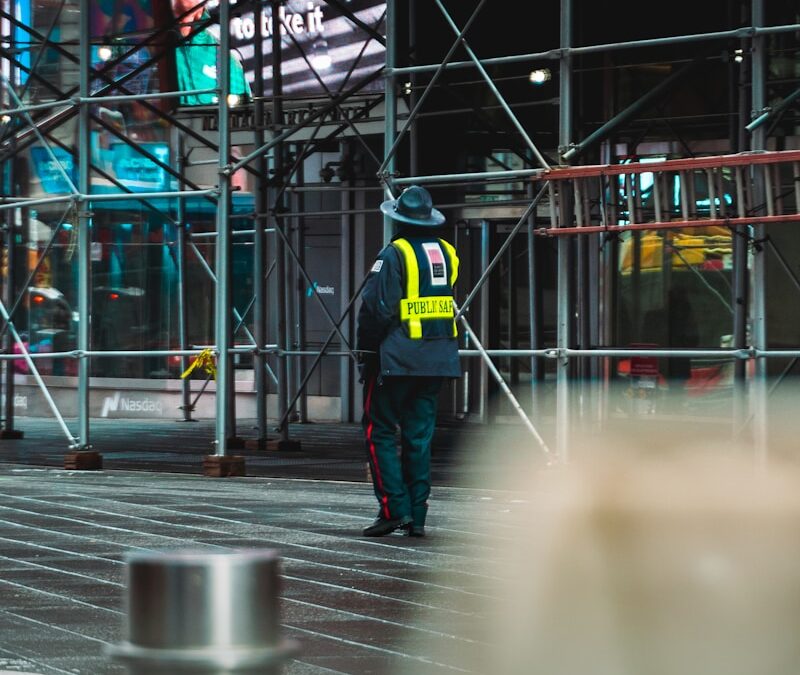Leveraging Predictive Analytics for Enhanced Public Safety in Saudi Arabia and UAE
Using Predictive Analytics to Anticipate and Mitigate Public Safety Risks
Predictive analytics in public safety has become a vital component of smart city initiatives, particularly in technologically advanced regions like Saudi Arabia and the UAE. By harnessing the power of data analysis and machine learning, predictive analytics enables cities like Riyadh and Dubai to anticipate potential public safety risks and implement proactive measures to mitigate them. This approach involves analyzing vast datasets from various sources, including IoT devices, surveillance cameras, social media, and historical crime data, to predict where and when incidents are likely to occur. The insights gained from predictive analytics allow city authorities to allocate resources more effectively, respond to threats faster, and ultimately create safer urban environments for residents and visitors.
In Riyadh, predictive analytics plays a crucial role in enhancing the city’s public safety strategies. For example, by analyzing data from traffic cameras and IoT sensors, predictive models can identify areas with a high likelihood of accidents or traffic violations. This information enables the deployment of law enforcement and emergency response teams to critical locations before incidents occur, significantly reducing response times and improving overall safety. Furthermore, predictive analytics can be used to forecast the impact of large public events on city infrastructure, allowing authorities to implement crowd control measures and adjust traffic management plans to prevent congestion and ensure public safety.
Dubai, known for its cutting-edge smart city technologies, also utilizes predictive analytics to optimize public safety measures. The city’s law enforcement agencies leverage predictive models to analyze crime patterns and allocate patrol units to high-risk areas based on real-time data. This data-driven approach has proven effective in reducing crime rates and enhancing the efficiency of police operations. Additionally, predictive analytics supports Dubai’s emergency services by forecasting the demand for medical assistance during extreme weather events, such as heatwaves. By anticipating spikes in emergency calls, healthcare providers can ensure adequate staffing and resource availability, improving their ability to respond swiftly to public health emergencies.
Implementing Predictive Analytics for Smarter Public Safety Strategies
Implementing predictive analytics in public safety requires a comprehensive approach that combines data integration, advanced analytics, and a commitment to continuous improvement. One of the key steps in deploying predictive analytics for public safety is integrating data from multiple sources into a unified platform. In Saudi Arabia, smart city projects are increasingly focusing on creating centralized data hubs that aggregate information from IoT sensors, CCTV networks, and public service reports. This integration enables a holistic view of the city’s safety landscape, allowing predictive models to generate more accurate and actionable insights. By leveraging these insights, city authorities in Riyadh can develop targeted interventions that address specific safety concerns, such as reducing pedestrian accidents or preventing vandalism in public spaces.
Another critical factor in the successful deployment of predictive analytics for public safety is the use of machine learning algorithms that can adapt and evolve over time. In Dubai, the implementation of AI-powered analytics platforms enables predictive models to refine their predictions based on new data and changing conditions. This adaptability is essential for maintaining the relevance and accuracy of predictive analytics in dynamic urban environments. For instance, during major city events like the Dubai Expo, predictive models can adjust their forecasts to account for the influx of visitors and the associated safety challenges. This level of flexibility ensures that public safety measures remain effective, even as conditions change.
Moreover, public engagement and collaboration are vital for maximizing the impact of predictive analytics in public safety. By sharing predictive insights with the public, city authorities can empower residents to take proactive steps to enhance their own safety. In the UAE, Dubai’s smart city initiatives include the development of mobile apps that provide real-time safety alerts and recommendations to users based on predictive analytics. These apps not only inform residents about potential risks, such as severe weather conditions or road closures, but also offer guidance on how to stay safe. This collaborative approach fosters a culture of shared responsibility for public safety, reinforcing the city’s overall efforts to create a secure and resilient urban environment.
Conclusion: The Impact of Predictive Analytics on Public Safety in Smart Cities
In conclusion, predictive analytics in public safety plays a transformative role in optimizing safety measures in smart cities like Riyadh and Dubai. By leveraging data-driven insights, predictive analytics enables city authorities to anticipate risks, allocate resources more effectively, and respond proactively to potential threats. This approach not only enhances the efficiency of public safety operations but also contributes to the broader goals of digital transformation and sustainable urban development in Saudi Arabia and the UAE. As these regions continue to invest in smart city technologies, the integration of predictive analytics will be crucial for building safer, more connected, and more resilient urban environments.
The experiences of Riyadh and Dubai in deploying predictive analytics for public safety offer valuable lessons for other cities aiming to enhance their safety measures through technology. By embracing predictive analytics, cities can move beyond reactive approaches to public safety and adopt a proactive, data-driven strategy that addresses risks before they escalate. As smart city initiatives evolve, the role of predictive analytics will continue to expand, providing new opportunities to safeguard communities and improve the quality of life for residents. Through strategic deployment and ongoing innovation, predictive analytics stands as a powerful tool for shaping the future of public safety in the digital age.
—
#PredictiveAnalytics, #PublicSafety, #SmartCity, #SaudiArabiaInnovation, #UAEIoT, #DigitalTransformation, #SmartCities, #SafetyOptimization, #ModernTechnology, #UrbanResilience












